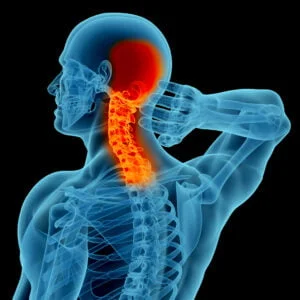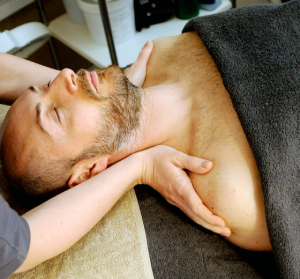Neck tendonitis, a prevalent condition, brings discomfort and pain to many. But what is it exactly? In this comprehensive guide, we’ll delve into the causes, symptoms, diagnosis, and treatment of neck tendonitis. Whether you’re seeking relief from its grip or aiming to prevent its onset, this article has got you covered.
Contents
What is Neck Tendonitis?
Neck pain is a common complaint that affects people of all ages and backgrounds. One of the common causes of neck pain is neck tendonitis, also known as cervical tendonitis or neck tendinopathy. This condition involves inflammation or irritation of the tendons in the neck region, leading to discomfort and restricted movement.
Causes and Risk Factors of Neck Tendonitis

Understanding the causes and risk factors of neck tendonitis is crucial for its prevention and effective management. Some of these are:
1. Overuse and Repetitive Strain: One of the primary causes of neck tendonitis is overuse or repetitive strain on the neck muscles and tendons. Engaging in activities that involve repetitive neck movements, such as constant typing, painting, playing musical instruments, or using handheld devices, can put undue stress on the tendons. Over time, this repetitive strain can lead to inflammation and microtrauma within the tendons, resulting in tendonitis.
2. Poor Posture: Maintaining poor posture for extended periods is a common risk factor for neck tendonitis. Hunching over a computer, slouching while sitting, or cradling a phone between the shoulder and ear can lead to imbalances in the neck muscles and increase the risk of tendonitis. Poor posture places additional stress on the tendons and supporting structures of the neck.
3. Muscle Imbalances: Muscle imbalances occur when certain muscles in the neck are stronger or tighter than others. Imbalances can cause uneven stress distribution across the tendons, leading to inflammation and irritation. Weakness in some muscles and tightness in others can create an unstable environment for the tendons, making them more susceptible to injury.
4. Age-related Changes: As we age, the tendons naturally lose some of their flexibility and elasticity. This makes them more prone to injury and inflammation even with minor stresses. Aging also reduces the body’s ability to repair damaged tissues efficiently, increasing the likelihood of developing neck tendonitis.
Common Symptoms of Neck Tendonitis
The common symptoms of neck tendonitis include:
- Neck Pain: The primary symptom is localized pain in the neck. The pain might be dull, aching, or sharp, and it’s usually felt in the affected tendon areas.
- Stiffness: People with neck tendonitis may experience stiffness in the neck, making it difficult to move the head and neck freely.
- Tenderness: The affected areas might be tender to the touch, and pressing on the inflamed tendons can cause discomfort.
- Limited Range of Motion: Tendonitis can lead to a decreased range of motion in the neck. You might find it challenging to turn your head or tilt it to the side.
- Muscle Spasms: In response to the inflammation, muscles in the neck might go into spasms, causing additional pain and discomfort.
- Pain Radiation: The pain might radiate to other areas, such as the shoulders, upper back, or even down the arms. This is known as referred pain.
- Headaches: Neck tendonitis can trigger tension headaches due to the strain on the neck muscles and their connections to the head.
- Pain with Movement: Activities that involve moving the neck, such as turning, tilting, or looking up or down, can exacerbate the pain.
- Pain with Pressure: Pressing on the affected tendon areas or engaging in activities that put pressure on the tendons, like carrying heavy bags, might worsen the pain.
How Does Neck Tendonitis Impact Someone?
Neck tendonitis can have a significant impact on a person’s daily life and overall well-being due to the pain, discomfort, and limitations it can cause. Here’s how neck tendonitis can impact someone:
- Pain and Discomfort: The most immediate impact of neck tendonitis is pain. The affected person might experience varying degrees of pain, from dull aches to sharp, localized discomfort. This pain can make it difficult to perform everyday activities, work tasks, and enjoy leisure activities.
- Limited Range of Motion: Neck tendonitis can restrict the range of motion in the neck. This limitation can make it challenging to turn the head, tilt the neck, or look up and down.
- Sleep Disturbances: Discomfort and pain can make it hard to find a comfortable sleeping position, leading to disrupted sleep patterns and potential fatigue.
- Difficulty Concentrating: Constant pain and discomfort can make it difficult to concentrate on tasks, affecting work performance and daily activities that require focus.
- Reduced Physical Activities: Individuals with neck tendonitis may need to reduce or modify their physical activities, including exercise, sports, and hobbies, to avoid exacerbating the condition.
Diagnosis of Neck Tendonitis
The diagnosis of neck tendonitis typically involves a combination of medical history evaluation, physical examination, and sometimes imaging studies. Here’s how the process usually works:
- Medical History: Your healthcare provider will begin by asking you about your symptoms when they started, and what activities or movements seem to trigger or worsen the pain. They will also inquire about your medical history, including any previous neck injuries or conditions.
- Physical Examination: A physical examination will be conducted to assess the range of motion of your neck, identify areas of tenderness or swelling, and observe your posture. Your doctor might gently press on specific areas to pinpoint the source of pain and discomfort.
- Palpation: Palpation involves manually feeling the affected areas of your neck to identify tender points, knots, or areas of inflammation in the neck muscles and tendons.
- Range of Motion Tests: Your doctor may ask you to perform various neck movements to assess your range of motion and identify any restrictions or pain during specific movements.
- Imaging Studies: In some cases, imaging studies might be recommended to rule out other potential causes of your symptoms or to get a better look at the affected area. These imaging methods can include X-rays, ultrasound, or MRI scans. These images can help visualize the soft tissues, bones, and structures of the neck, which can aid in confirming the diagnosis of tendonitis and ruling out other conditions.
Treatment of Neck Tendonitis

The treatment of neck tendonitis typically involves a combination of strategies aimed at reducing pain, and inflammation, and promoting healing. Here are some common approaches to treating neck tendonitis:
- Pain Relief Medications: Over-the-counter nonsteroidal anti-inflammatory drugs (NSAIDs), such as ibuprofen or naproxen, can help alleviate pain and reduce inflammation. Always consult a doctor before using any medication.
- Physical Therapy: A physical therapist can design a personalized exercise program to improve neck mobility, strengthen the muscles that support the neck, and correct posture. They may also use techniques like manual therapy and stretching to alleviate muscle tension.
- Heat and Cold Therapy: Applying heat or cold to the affected area can help reduce pain and inflammation. Cold packs can be applied during the acute phase to decrease inflammation, while heat packs can be used during the healing phase to promote blood flow and relaxation.
- Ergonomic Modifications: Improving your workspace ergonomics and maintaining proper posture can help prevent further strain on your neck. Adjust the height of your computer monitor, use an ergonomic chair, and take breaks to stretch and move around.
Preventing Neck Tendonitis

Preventing neck tendonitis involves adopting healthy habits and making lifestyle changes to reduce the risk of overuse, strain, and inflammation in the neck muscles and tendons. Here are some tips to help prevent neck tendonitis:
- Maintain Good Posture: Practice proper posture while sitting, standing, and walking. Keep your shoulders relaxed, your spine aligned, and your head balanced over your shoulders.
- Ergonomic Workspace: Set up your workstation ergonomically. Adjust your computer monitor, keyboard, and chair to encourage a neutral neck and spine position.
- Frequent Breaks: Take regular breaks when engaging in activities that require prolonged neck posture, such as working at a computer. Stretch and move your neck and shoulders during breaks.
- Use a Supportive Pillow: Choose a supportive pillow that aligns your head and neck with your spine while sleeping. Avoid using pillows that are too high or too flat.
- Stay Hydrated: Proper hydration is essential for maintaining the health of your muscles, tendons, and other tissues.
- Stretching and Strengthening: Incorporate regular neck and shoulder stretches and strengthening exercises into your routine. This can help improve flexibility and muscle strength, reducing the risk of strain.
- Warm-Up Exercises: Before engaging in activities that require neck movement or strain, perform gentle warm-up exercises to prepare the muscles and tendons.
- Avoid Repetitive Strain: If your work or hobbies involve repetitive neck movements, take breaks and incorporate variety into your activities to avoid overuse.
- Use Proper Lifting Techniques: When lifting heavy objects, use your legs and core muscles, rather than straining your neck and back.
- Limit Phone and Screen Time: Excessive screen time, especially on handheld devices, can lead to poor neck posture. Hold your devices at eye level to avoid prolonged bending of the neck.
Conclusion
In the battle against neck tendonitis, understanding its origins, symptoms, and treatment options is empowering. By adopting preventive measures, seeking timely treatment, and making lifestyle adjustments, you can regain control over your neck health. Remember, your journey to recovery begins with knowledge and action.
If you’re experiencing Neck pain, physical therapy for neck pain at PhysioMantra can help: Book an online physical therapy session.



